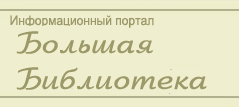Другое : Why the crystal structure of the element is such lattice but not another?
Why the crystal structure of the element is such lattice but not another?
Why the crystal structure of the element is such
lattice but not another?
Реферат
Геннадия Филипенко
Гродно
1996
“Why the crystal structure of the element is such
lattice but not another?How much electrons are placed in zone conductivity from
one the atom of lattice?”
Abstract
The literature generally describes a metallic bond as
the one formed by means of mutual bonds between atoms' exterior electrons and
not possessing the directional properties. However, attempts have been made to
explain directional metallic bonds, as a specific crystal metallic lattice.Why
the crystal structure of the element is such lattice but not another?How much
electrons are placed in zone conductivity from one the atom of lattice?
This paper demonstrates that the metallic bond in the
densest packings (volume-centered and face-centered) between the centrally
selected atom and its neighbours in general is, probably, effected by 9 (nine)
directional bonds, as opposed to the number of neighbours which equals 12
(twelve) (coordination number).
Probably, 3 (three) "foreign" atoms are
present in the coordination number 12 stereometrically, and not for the reason
of bond. This problem is to be solved experimentally.
Introduction
At present, it is impossible, as a general case, to
derive by means of quantum-mechanical calculations the crystalline structure of
metal in relation to electronic structure of the atom. However, Hanzhorn and
Dellinger indicated a possible relation between the presence of a cubical
volume-centered lattice in subgroups of titanium, vanadium, chrome and
availability in these metals of valent d-orbitals. It is easy to notice that the
four hybrid orbitals are directed along the four physical diagonals of the cube
and are well adjusted to binding each atom to its eight neighbours in the
cubical volume-centered lattice, the remaining orbitals being directed towards
the edge centers of the element cell and, possibly, participating in binding
the atom to its six second neighbours /3/p. 99.
Let us try to consider relations between exterior
electrons of the atom of a given element and structure of its crystal lattice,
accounting for the necessity of directional bonds (chemistry) and availability
of combined electrons (physics) responsible for galvanic and magnetic
properties.
According to /1/p. 20, the number of Z-electrons in
the conductivitiy zone has been obtained by the authors, allegedly, on the
basis of metal's valency towards oxygen, hydrogen and is to be subject to
doubt, as the experimental data of Hall and the uniform compression modulus are
close to the theoretical values only for alkaline metals. The volume-centered
lattice, Z=1 casts no doubt. The coordination number equals 8.
The exterior electrons of the final shell or subcoats
in metal atoms form conductivity zone.
The number of electrons in the conductivity zone effects Hall's constant,
uniform compression ratio, etc.
Let us construct the model of
metal - element so that external electrons of last layer or sublayers of atomic
kernel, left after filling the conduction band, influenced somehow pattern of
crystalline structure (for example: for the body-centred lattice - 8 ‘valency’
electrons, and for volume-centered and face-centred lattices - 12 or 9).
ROUGH, QUALITATIVE MEASUREMENT OF NUMBER OF ELECTRONS
IN CONDUCTION BAND OF METAL - ELEMENT. EXPLANATION OF FACTORS, INFLUENCING
FORMATION OF TYPE OF MONOCRYSTAL MATRIX AND SIGN OF HALL CONSTANT.
(Algorithm of construction of model)
The measurements of the Hall field allow us to
determine the sign of charge carriers in the conduction band. One of the
remarkable features of the Hall effect is, however, that in some metals the
Hall coefficient is positive, and thus carriers in them should, probably, have
the charge, opposite to the electron charge /1/. At room temperature this holds
true for the following: vanadium, chromium, manganese, iron, cobalt, zinc,
circonium, niobium, molybdenum, ruthenium, rhodium, cadmium, cerium,
praseodymium, neodymium, ytterbium, hafnium, tantalum, wolfram, rhenium,
iridium, thallium, plumbum /2/. Solution to this enigma must be given by
complete quantum - mechanical theory of solid body.
Roughly speaking, using the base cases of Born-
Karman, let us consider a highly simplified case of one-dimensional conduction
band. The first variant: a thin closed tube is completely filled with electrons
but one. The diameter of the electron roughly equals the diameter of the tube.
With such filling of the area at local movement of the electron an opposite
movement of the ‘site’ of the electron, absent in the tube, is observed, i.e.
movement of non-negative sighting. The second variant: there is one electron in
the tube - movement of only one charge is possible - that of the electron with
a negative charge. These two opposite variants show, that the sighting of
carriers, determined according to the Hall coefficient, to some extent, must
depend on the filling of the conduction band with electrons. Figure 1.


Информационная Библиотека
для Вас!
|


